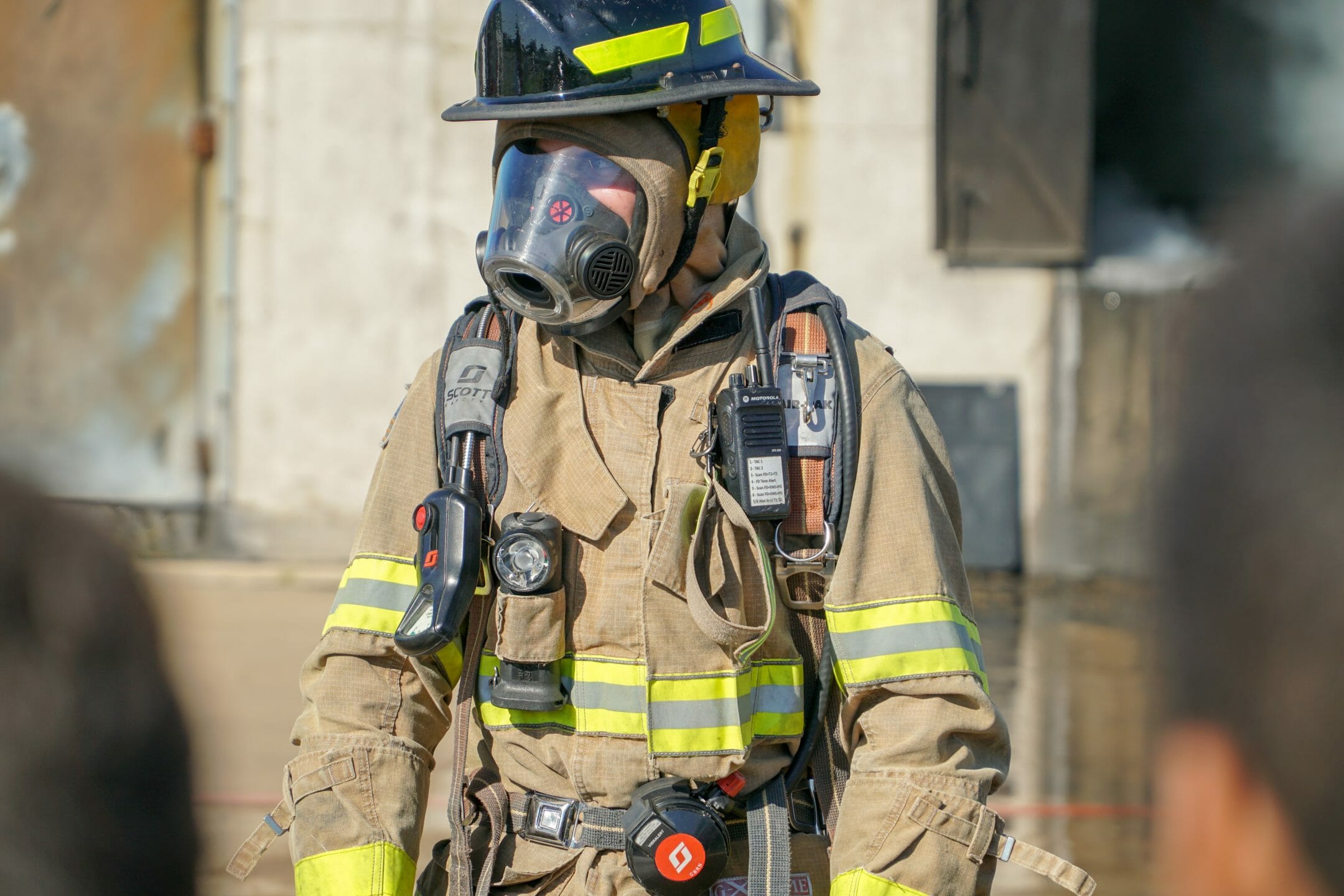We need to face a hard truth: A fire can strike at any time, whether we’re prepared for one or not. This is why whether you’re a homeowner, business owner, or construction professional, fireproofing is a critical component of building safety that you simply can’t afford to overlook. Without taking the proper proofing measures, the consequences of an unforeseen blaze can be catastrophic.
So, in this article, we’ll go over the importance of proofing for fires and explore different materials and techniques that help slow down the flames.
What’s fireproofing?
Proofing a building or home for potential fire hazards is the process of making buildings and structures more resistant to fire. Sometimes called ‘passive fire protection,’ this process involves treating materials and surfaces with special coatings or adding fire-resistant materials during construction. By doing so, it extends the time a material can be exposed to fire before it’s taken by the flames.
The proofing process aims to prevent and/or slow down the spread of fire. Proofing techniques can be applied to a range of structures. This includes homes, commercial and residential properties, high-rise buildings, industrial plants, and public facilities.
Why is fireproofing important?
A spark can spread– quite literally– like wildfire. One spark that gets out of control can cause significant damage and loss of life if appropriate proofing measures aren’t taken. This is why proofing for a potential blaze is commonly mandated by building codes and regulations to ensure that structures meet minimum safety standards.
When you take the appropriate steps to proof a structure for an unprecedented blazing disaster, it ensures the safety of the structure, the occupants, and the surrounding environment. This said, proofing for fires gives the people inside more time to escape, while also minimizing potential damage to the property caused by flames and heat. Plus, proofing doesn’t only keep the people inside the flames safe– it also provides a safe entry for firefighters to perform rescue services.
Lastly, proofing techniques reduce the risk of fires spreading to neighboring buildings. Thus, it’s a critical element of fire safety in urban areas where buildings are near each other.
A quick history of fireproofing
So, how was the idea of proofing for fires born? Well, it starts way back around 400 B.C. when the first flame-resistant materials were invented. But, their demand didn’t significantly increase until the 17th century. This is because it wasn’t until the 1630s that the thought of reducing fire hazards in theaters crept into Paris society. People in Paris started to take proofing measures by using plaster and clay, which marked the beginning of the development of flame-resistant materials.
Flash-forward to about 300 years later, and we get to the discovery of Tetra (hydroxymethyl) phosphonium chloride (THPC) in 1953. Tetra could be applied to a range of materials including cotton, paper, plastic, paint, furniture, and other building materials to make them resistant to flames. As a result, it catapulted the advancement in the process of creating fire-resistant fabrics.
Fireproof doesn’t mean full-proof
Okay, so while following fireproofing standards is an essential element of fire safety, it’s important to be aware of the fact that no material or system can ever be 100% fireproof. All physical structures and components have limitations and can suffer irreparable damage from fire. So, instead of using the term “fireproof,” what we should be saying is “fire-resistant.” This is because proofing for fires only gives protection for a specific amount of time.
To clarify further, following proofing protocol doesn’t guarantee that an item won’t be affected by fire or won’t burn. Proofing simply offers protection for a set period, based on the material’s performance under certain tests and evaluations. Then, during this set period of fire resistance, we have time to extinguish the fire, turn off the fuel supply, evacuate personnel safely, and stop the fire’s progression.
Here’s an analogy: Think about fire as a fever in your body. Taking Advil or Tylenol would be your applied “fireproofing.” While these medications can ‘slow the burn’ of your fever and reduce your temperature, they don’t ‘cure’ your fever. Rather, they provide temporary relief so your body can fight off the infection. In other words, Advil (your proofing measure) gives you time to heal from the fever (the fire).
What material is used for fireproofing?
Alright, now you know that no practical building material can be considered completely fireproof. But, utilizing relatively fire-resistant materials or non-flammable materials in well-constructed houses and buildings can help prevent tragedies.
So, what is fireproof material? Simply put, it’s any material that takes longer to succumb to the effects of fire. These materials are rated based on the duration it would take for the fire to impact their structural abilities.
We’ve made a rundown of a few of the best fire-rated materials that help to slow the burn in any structure that encounters unprecedented flames.
1. Concrete
Concrete is arguably the best non-combustible building material that offers excellent fire resistance. Thus, it’s been used as a fireproofing material for a long time. In fact, many refineries built before WWII leveraged the use of concrete extensively for fire protection.
Due to its low thermal conductivity, it takes a long time for burning flames to impact concrete’s load-bearing capacity. This is how it helps to prevent the spread of flames. It’s even considered more fire-resistant than steel. As a result, concrete’s often used to reinforce and protect steel structures from fire damage.
2. Gypsum-based coating
Gypsum-based coatings make terrific fireproof wall materials that resemble white stucco when dry. These coatings have a plaster-like texture and are sprayed onto structural surfaces for fire protection. They’re pretty easy to apply as they can be quickly sprayed onto a variety of surfaces including steel, concrete, and wood. Plus, they can be used in many different property structures such as schools, industrial buildings, hospitals, and commercial properties.
How do gypsum-based coatings provide fire protection?
Gypsum is a naturally occurring mineral that’s fire-resistant. So, when exposed to high temperatures, the gypsum in the coating releases water vapor, which helps to cool the surrounding area and reduce the intensity of the fire. A gypsum-based coating also forms a protective layer over the underlying substrate. This helps to prevent it from reaching its ignition temperature.
3. Intumescent paint
Intumescent fireproofing is the more aesthetically-pleasing onsite proofing option compared to gypsum-based coatings. This type of fire-resistant paint is commonly applied to tanks, valves, and metallic pipes. Intumescent paint expands up to 100 times its initial thickness when exposed to high temperatures. As a result, a thick, protective layer is formed to help insulate and protect the underlying surface from the effects of disastrous flames.
Intumescent paints are typically made up of several layers, including a primer, a base coat, and a topcoat. Each layer contains specialized ingredients that help produce the desired level of fire resistance. These three layers work together to create a coating that’s lighter in weight than any other protective coating, but can still fight corrosion just as well.
How to make wood fire-resistant
Yes, that thing you use to make a bonfire in your backyard can actually become fire-resistant with the right treatment. Crazy, right? Well, while it’s true you can’t ever make wood 100% fireproof, you can slow down its burn rate by using intumescent paints.
To apply intumescent paint to wood, you need to first clean the surface by removing any dirt, dust, or debris. Then, apply a primer coat of intumescent paint, following the manufacturer’s instructions. Once the primer coat is dry, apply one or more additional coats of intumescent paint until the desired level of fire resistance is reached. We must note here that intumescent paints are typically applied in multiple layers. So, this means that they could require periodic maintenance to maintain their effectiveness.
Your ultimate guide to fireproofing
Proofing for fires is about so much more than just complying with safety regulations. It’s about protecting people and property from the devastating effects of flames, smoke, and heat. Now that you understand the importance of proofing for fires, should a disaster strike, you can refer to the materials and methods we’ve mentioned to keep you and your loved ones safe.


